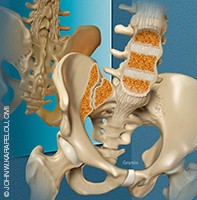Peer Reviewed
Feature Article Rheumatology
Ankylosing spondylitis: new insights into an old disease
Abstract
Early recognition and treatment of patients with ankylosing spondylitis (AS) improves prognosis but is challenging. Suggestive symptoms include chronic back pain that worsens with rest and early morning axial pain and stiffness. NSAIDs and stretching exercises remain the mainstays of treatment. Tumour necrosis factor inhibitors improve quality of life for patients with refractory AS.
Key Points
- Ankylosing spondylitis (AS) is a chronic systemic inflammatory disease characterised by sacroiliitis, extra-articular manifestations such as uveitis, human leucocyte antigen (HLA)-B27 positivity and familial aggregation.
- Consider the diagnosis of AS in young patients with back pain and stiffness early in the morning and after prolonged sitting.
- Appropriate initial investigations are a plain x-ray of the pelvis and blood tests for HLA-B27, erythrocyte sedimentation rate and C-reactive protein level.
- MRI can identify early inflammatory bony changes not seen on x-ray and is prudent in patients with a clinical history consistent with AS but a normal x-ray appearance.
- The mainstay of treatment for patients with AS remains NSAIDs and stretching exercises.
- Tumour necrosis factor inhibitors are effective therapy for patients who fail to respond to first-line treatments.
Picture credit: © John W. Karapelou, CMI.
Purchase the PDF version of this article
Already a subscriber? Login here.

